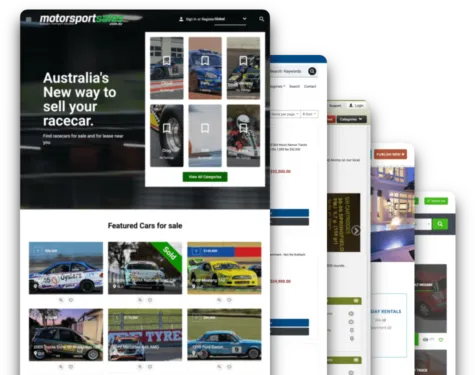In today’s digital economy, visuals are no longer just enhancements—they are necessities.
A potential buyer's decision is often made within seconds of viewing a product.

Compelling imagery and design can make or break that decision.
The importance of visuals in online marketplaces cannot be overstated.
They communicate trust, showcase product quality, and provide a competitive edge.
This article explores how visuals influence buyer decisions and what marketplace owners can do to maximize their visual strategies.
The Role of Visuals in Building Trust
Visuals as a First Impression
- Shoppers decide the credibility of a marketplace based on its appearance.
- Poor-quality images reduce trust, while professional visuals encourage purchases.
Statistics:
- 75% of consumers judge a company's credibility based on its website design. Source
- Listings with professional photos sell 32% faster than those with amateur photos. Source
Solutions: Elevate Visual Quality
- Invest in Professional Photography: Showcase products in well-lit and clear images.
- Use Consistent Design Elements: Maintain uniform fonts, colors, and layout for a cohesive experience.
- Embed Trust Signals: Include verified badges, clear product descriptions, and secure payment icons.

The Psychology Behind Visual Decisions
How Colors Influence Buying Behavior
- Red evokes urgency, often used in clearance sales.
- Blue creates a sense of trust and reliability, perfect for financial or service-based marketplaces.
The Role of Visual Hierarchy
- Highlight key elements such as “Buy Now” buttons through size, color, and placement.
- Use whitespace strategically to guide users’ eyes to essential parts of a listing.
Data:
- 85% of consumers cite color as the primary reason for their purchase decision. Source
Solution: Leverage Psychological Triggers
- Use Eye-Catching Call-to-Actions: Bright buttons with action-oriented text like "Get It Now."
- Incorporate Emotional Visuals: Show people using the product for relatability.

Visual Strategies for Product Listings
The Power of High-Quality Images
- Multiple images from different angles provide transparency.
- Zoom functionality ensures buyers feel confident about product details.
Videos as Game-Changers
- Demonstrations highlight product functionality better than static photos.
- 73% of consumers are more likely to buy after watching a product video. Source
Best Practices:
- Use a minimum of three photos per product: front, side, and contextual shots.
- Add short 30-60 second videos showcasing unique product features.
Challenges and Solutions
Challenge 1: Managing Costs for Visual Content
- High-quality visuals often require investment in professional photographers or equipment.
Solution:
- Use affordable tools like Canva for graphic design.
- Partner with freelance photographers on platforms like Fiverr or Upwork.
Challenge 2: Optimizing Visuals for Mobile
- Over 70% of e-commerce traffic comes from mobile devices. Source
- Poorly optimized visuals slow down loading times, frustrating users.
Solution:
- Compress images to reduce size without compromising quality.
- Test visuals on different devices to ensure consistency.
Real-Life Case Studies
Case Study 1: Airbnb’s Visual Transformation
Airbnb shifted its focus to high-resolution images and community-based storytelling.
- Hosts are now encouraged to upload professional photos of their listings.
- This strategy increased bookings by 24% in cities where the initiative was launched. Source
Case Study 2: Etsy’s Dynamic Visual Content
Etsy introduced lifestyle imagery and video content to help buyers visualize products in their lives.
- Listings with lifestyle photos saw 23% higher conversions. Source
Innovations and Evolving Strategies
Augmented Reality (AR) for Visualization
- AR allows buyers to “place” products in their homes virtually.
- Marketplaces like IKEA and Amazon are integrating AR to enhance buyer confidence.
Future Potential:
- Expanding AR for wearable items like clothing or accessories.
Personalization in Visuals
- AI tools can suggest products based on user preferences, accompanied by curated visuals.
- Personalized banners or promotional images increase engagement rates.
Prediction:
- By 2028, marketplaces that prioritize personalized visuals are expected to dominate 60% of market share. Source
The Bottom Line
Visuals are not just supplementary—they are central to the buying journey in online marketplaces.
From fostering trust to enabling buyers to envision products in their lives, visuals drive conversions.
Key Takeaways:
- Invest in professional photography and videos.
- Use color psychology and visual hierarchy effectively.
- Embrace innovations like AR and personalized content to stay ahead.
Conclusion
Visuals hold the key to influencing buyer decisions and driving marketplace success.
Whether you're launching a new platform or optimizing an existing one, your visual strategy can be your strongest asset.
Looking to Create a Marketplace? Contact Us at Yclas.

